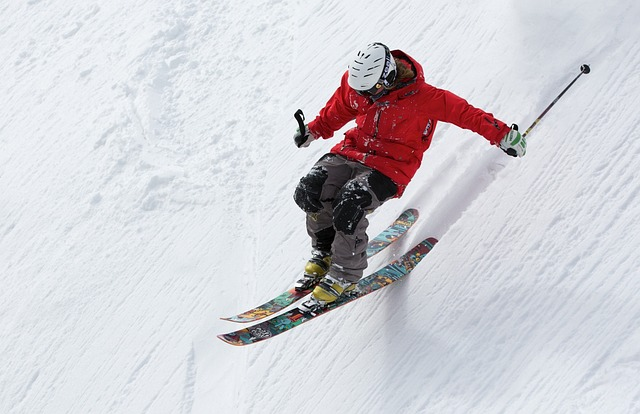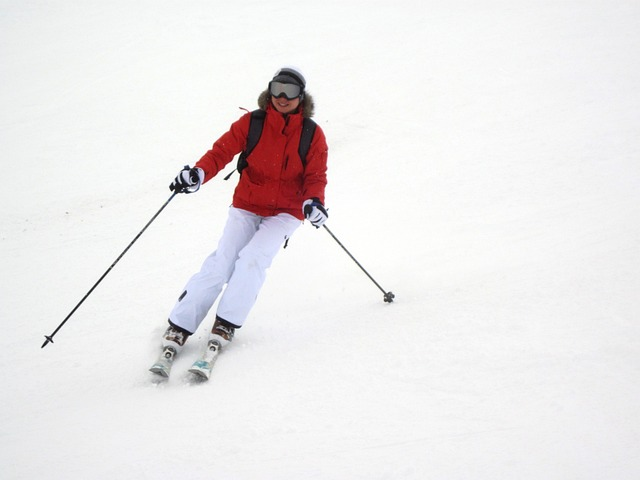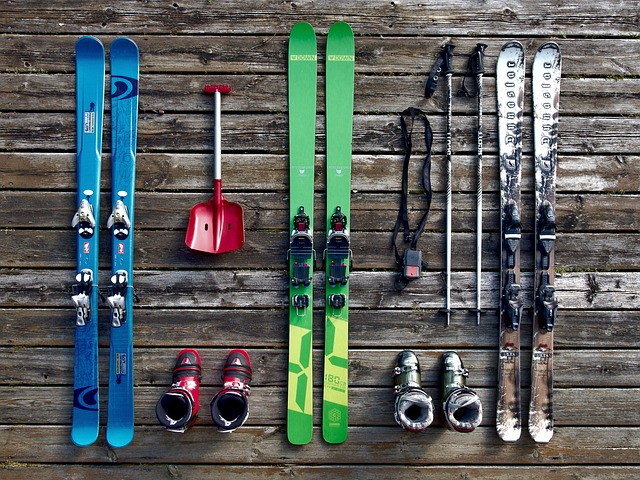John Spengler of Hailey Idaho is an avid skier and educator in the sport. In the following article, John Spengler provides a comprehensive guide for anyone looking to get into the sport, as well those who already have several seasons under their belts.
Understanding the right skiing techniques is crucial to enjoying a thrilling skiing experience and unlocking your true potential. Below, we will explore essential skiing techniques for beginners, intermediate skills for challenging terrains, and expert tips for advanced skiers. Get ready to master the slopes and embark on an unforgettable skiing adventure!
John Spengler Explains Essential Skiing Techniques for Beginners
Every great skier starts with the basics. As a beginner, John Spengler of Hailey Idaho says that you need to familiarize yourself with foundational skiing techniques. These will boost your confidence on the slopes and pave the way for developing more advanced skills. Ploughing, taking short turns, and maintaining proper body posture are fundamental techniques that will shape you into a pro skier in no time.
Now, let’s explore these fundamental techniques and kickstart your skiing adventure.
Ploughing
Ploughing, also known as the snowplough, is a beginner’s skiing technique that focuses on controlled braking and getting a feel for the skis. To master this technique, apply pressure to the insides of your feet while moving your heels outwards so the tips of your skis point towards each other.
While smoothly gliding down the slope, keep foresight and awareness of your surroundings in mind to prevent collisions. With practice and persistence, you’ll soon become an expert at ploughing, which will set a strong foundation for more advanced skiing techniques.
Short Turns
Short turns are crucial for quick leg work, constant edge pressure, and downhill ski pressure, making this technique ideal for narrow and steep slopes. Mastering the right skiing technique involves three phases: initiation, shaping, and finishing.
When skiing on narrow slopes, short turns allow you to ski in a tight radius to take up less space, promoting mutual consideration and a safe skiing environment on crowded or narrow pistes. Gradually, mastering short turns will prove invaluable for navigating challenging terrains like steep or icy slopes.
Proper Body Posture
John Spengler of Hailey Idaho maintains that proper body posture is the core foundation for all skiing techniques and styles. For optimal performance, maintain a balanced skiing posture by bending your knees and leaning slightly forward. This positioning will not only improve your control and efficiency on the slopes, but also help you prevent injuries and enjoy a more comfortable skiing experience.
As your skiing skills evolve, keep in mind that maintaining the correct upper body posture and keeping your skis parallel are key to achieving success on the slopes.
Intermediate Skiing Techniques
 Once you’ve grown comfortable with the basics, it’s time to elevate your skiing skills. Intermediate skiing techniques such as carving, skiing moguls, and deep snow skiing will help you progress to more challenging terrain and transform your entire skiing experience. John Spengler of Hailey Idaho reports that with the right guidance and practice, you’ll soon master these techniques and confidently conquer a variety of slopes.
Once you’ve grown comfortable with the basics, it’s time to elevate your skiing skills. Intermediate skiing techniques such as carving, skiing moguls, and deep snow skiing will help you progress to more challenging terrain and transform your entire skiing experience. John Spengler of Hailey Idaho reports that with the right guidance and practice, you’ll soon master these techniques and confidently conquer a variety of slopes.
Carving
Carving is an intermediate skiing technique that combines smooth cornering with high speed, allowing you to create beautiful arcs on the slopes. John Spengler says that to master carving, focus on:
- 1Rolling your feet, ankles, and knees into a turn
- Tipping your skis over at the top of the arc
- Allowing them to cut into the snow, guiding you around the turn
A blend of twisting and tipping movements can lead to the smooth, successful ski turns that are ideal for navigating challenging terrains such as steep or icy slopes.
Skiing Moguls
Moguls are bumps of snow created by skiers who have skied the same slope multiple times. Skiing moguls require:
- Agility
- Body tension
- Stable core muscles
- Sufficient strength
To prepare for skiing moguls, hone your turning skills on regular slopes, and when you feel ready, take on the undulating terrain.
Stay relaxed, keep your eyes focused on the terrain ahead, and maintain a balanced and offensive stance while skiing moguls. With practice, you’ll be able to ski moguls confidently and enjoy the thrill of navigating these challenging formations.
Deep Snow Skiing
Deep snow skiing is an exciting and rewarding experience that involves skiing in deep, fluffy snow rather than on groomed runs. To ski in deep snow, gently tip the skis, feet, ankles, and knees to one side, and maintain a balanced and offensive stance.
John Spengler of Hailey Idaho says that excelling at short turns is crucial when skiing on challenging terrains like steep or icy slopes. As you gain more experience and confidence in deep snow skiing, you’ll be able to tackle a wide range of snow conditions and elevate your skiing experience to new heights.
Expert Skiing Techniques for Advanced Skiers
 For advanced skiers eager to push their limits and conquer the most challenging terrain, expert skiing techniques are indispensable. Off-piste skiing, mastering black runs, and skiing steep slopes will elevate your skiing experience and help you conquer even the most daunting slopes.
For advanced skiers eager to push their limits and conquer the most challenging terrain, expert skiing techniques are indispensable. Off-piste skiing, mastering black runs, and skiing steep slopes will elevate your skiing experience and help you conquer even the most daunting slopes.
With dedication, practice, and the right guidance, you’ll be able to tackle any slope with confidence and finesse, even when approaching the fall line.
Off-Piste Skiing
Off-piste skiing refers to skiing on slopes that are not marked by piste or trail marker poles and have not been prepared by grooming. This type of skiing offers an exhilarating experience as you navigate untracked or ungroomed terrain, such as powdery snow. For safety during off-piste skiing, be sure to don a helmet, bring wider skis, carry an avalanche transceiver, and always have a partner accompanying you.
John Spengler of Hailey Idaho explains that mastering off-piste skiing will open up a whole world of thrilling adventures and breathtaking landscapes.
Mastering Black Runs
Black runs are the most challenging slopes, offering steep and often icy terrain. Conquering black runs requires:
- An assessment of your personal capabilities
- Maintenance of basic fitness
- Speed control
- Practicing strong edging
- Polishing your short turns technique
These tips will help you maintain control on steep, icy slopes.
John Spengler of Hailey Idaho says with the right preparation and mindset, you’ll be able to master black runs and experience the thrill of skiing on the most challenging of slopes.
Skiing Steep Slopes
Skiing steep slopes requires focus, control, and proper technique. To ski steep slopes safely, you should:
- Maintain proper positioning and balance
- Control your speed
- Use well-polished edges
- Keep your body and eyes focused downhill
- Put weight on your outside (downhill) ski
- Maintain a balanced and offensive stance
By perfecting your technique and practicing on steep slopes, you’ll gain the confidence and skills to tackle even the most daunting mountain terrain.
Lifts and Slope Navigation
Navigating the slopes and effectively using ski lifts are integral skills for a seamless skiing experience. In this section, John Spengler provides guidance on using different types of ski lifts and navigating slopes using piste maps.
With these tips, you’ll be able to enjoy a seamless holiday skiing experience from the moment you step onto the slopes.
Ski Lift Usage
Using ski lifts effectively is key to a smooth skiing experience. There are various types of ski lifts, including drag lifts, chairlifts, and gondolas, each with its own unique method of use. To ensure a safe and enjoyable experience, position yourself correctly on the lift, hold onto the lift correctly, and pay attention to the terrain.
By mastering the usage of different ski lifts, you’ll be able to access various ski slopes and make the most of your skiing adventure.
Reading Piste Maps
John Spengler of Hailey Idaho explains that being able to read piste maps is crucial for navigating ski areas and planning your skiing routes. Piste maps provide essential details on the structure of ski areas, such as:
- The runs
- Different ski lifts
- Ski patrol huts
- Restaurants
- Toilets
By understanding and using piste maps effectively, you can make the most of your skiing experience, plan out your skiing routes, and ensure you don’t miss out on any of the key features of any skiing area.
 Tips from Professional Ski Instructors
Tips from Professional Ski Instructors
Insights from professional ski instructors can significantly enrich your skiing experience. In this section, we’ll share valuable advice from professional ski instructors, including common mistakes to avoid and the benefits of getting personalized training and lessons.
Incorporating these ski tips into your skiing journey will help you reach your goals and become a better skier.
Common Mistakes to Avoid
John Spengler says steering clear of common skiing mistakes will facilitate a safer and more pleasurable experience. Some mistakes to avoid include improper body posture, using the wrong ski equipment, and not following the rules of the slopes.
By being mindful of these mistakes and taking the steps to correct them, you’ll be better prepared for a successful and enjoyable skiing experience.
Personalized Training and Lessons
Tailored training and lessons can expedite your progress and aid in achieving your skiing goals with more efficiency. A ski instructor can tailor their lessons to your specific needs and abilities, allowing for a more effective learning experience. Additionally, personalized training offers invaluable feedback and guidance that can enhance your technique and boost your confidence on the slopes.
Investing in personalized training and lessons is a smart choice for any skier looking to improve their skills and reach their full potential.
Summary
In conclusion, John Spengler says that, from the basics to the most advanced skiing skills, mastering the basic and advanced techniques is essential for enjoying a thrilling and memorable skiing experience. With proper guidance, practice, and attention to detail, you can conquer the slopes and become a confident, skilled skier. Equip yourself with the right knowledge, equipment, and mindset, and embark on an unforgettable skiing adventure!



 Tips from Professional Ski Instructors
Tips from Professional Ski Instructors


